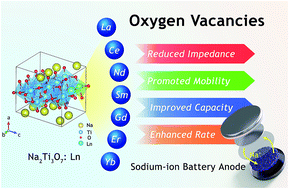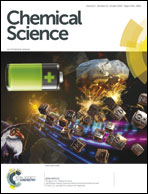Lanthanide doping induced electrochemical enhancement of Na2Ti3O7 anodes for sodium-ion batteries†
Abstract
Na2Ti3O7 is considered as a promising anode material for sodium ion batteries (SIBs) due to its excellent high-rate performance compared with hard carbons. However, the electrochemical performance of Na2Ti3O7 is heavily limited by its low electrical conductivity. In this study, we synthesized a series of lanthanide (Ln = La, Ce, Nd, Sm, Gd, Er, and Yb) doped microsized Na2Ti3O7 anode materials and systematically studied the electrochemical performance. Compared with pristine Na2Ti3O7, all the doped samples show superior electrochemical performance. Especially, the Yb3+ doped sample not only delivers a high reversible capacity of 89.4 mA h g−1 at 30C, but also maintains 71.6 mA h g−1 at 5C after 1600 cycles, nearly twice that of pristine Na2Ti3O7. It is found for the first time that the enhancement in doped samples is attributed to the introduction of lanthanides which induces lattice distortion and oxygen vacancies.

- This article is part of the themed collections: Celebrating 100 Years of Chemistry at Nankai University and Most popular 2018-2019 energy articles


 Please wait while we load your content...
Please wait while we load your content...